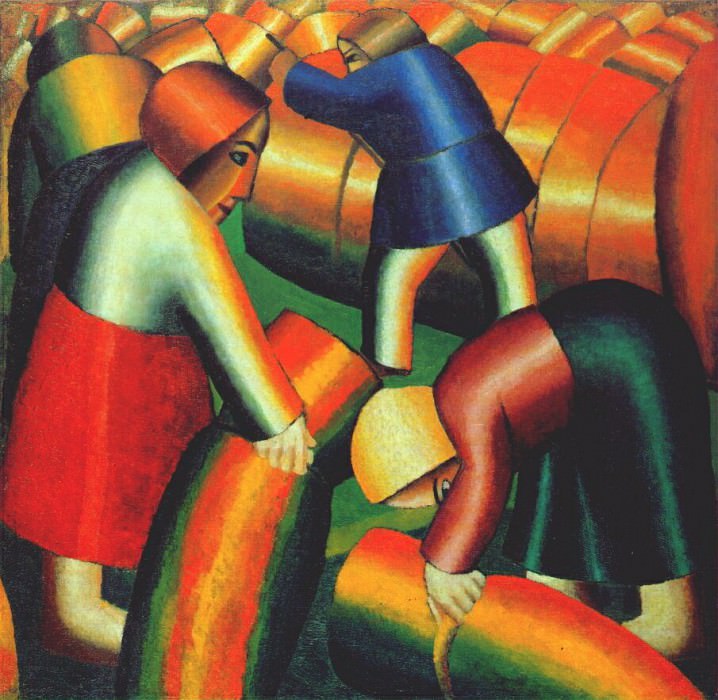malevich taking in the rye 1912 Kazimir Malevich (1879-1935)
Kazimir Malevich – malevich taking in the rye 1912
Edit attribution
Download full size: 905×883 px (0,2 Mb)
Painter: Kazimir Malevich
Location: Municipal Museum (Stedelijk Museum), Amsterdam.
"Harvesting the Rye" is a specimen of Russian Cubo-Futurism, which originated with the French masters. The work belongs to a peasant series of paintings depicting the humdrum way of rural life. During this period, Malevich had a breakthrough in the direction of artistic style. The plot of the picture is quite simple: the peasants are harvesting hay. The figures of people are deprived of complex details and deliberately depicted enlarged.
Description of the painting "Harvesting the Rye" by Kazimir Malevich
"Harvesting the Rye" is a specimen of Russian Cubo-Futurism, which originated with the French masters. The work belongs to a peasant series of paintings depicting the humdrum way of rural life. During this period, Malevich had a breakthrough in the direction of artistic style.
The plot of the picture is quite simple: the peasants are harvesting hay. The figures of people are deprived of complex details and deliberately depicted enlarged. They seem to be made up of bent sheets of iron, the hard material casting a metallic glow in the light. Although the bodies are painted rather simply and schematically, it is easy to tell where the men and women are.
The peasants look sturdy, solid on their feet, one might even say monumental. Their faces retain a calm expression, and their features refer us to icon painting, where the canon always depicted large eyes.
The painting of the peasant figures is completely devoid of realism and naturalism. Despite this, there are some dramatic notes in the work. The people resemble each other, their labor is mechanized, they seem aloof. This creates a stark contrast to the usual enthusiastic and heroic images of socialist workers, filled with pride and a passionate desire to serve for the good of the country.
"Harvesting the Rye" is one of the first paintings that showed signs of Cubo-Futurist painting. The haystacks in the form of cylinders and the clear shapes of the human figures make up a rather strong and stable composition. Interestingly, the upper part of the painting seems to escape from the control of this rigid scheme. The stacks are arranged haphazardly, disrupting the order, creating chaotic and unrestrained.
The eye is drawn to the vibrant palette using complementary color contrasts. Energetic combinations of red and green, blue and yellow add a certain dynamism to the frozen forms.
Кому понравилось
Пожалуйста, подождите
На эту операцию может потребоваться несколько секунд.
Информация появится в новом окне,
если открытие новых окон не запрещено в настройках вашего браузера.
You need to login
Для работы с коллекциями – пожалуйста, войдите в аккаунт (open in new window).




















You cannot comment Why?
Perhaps it’s a painting of a group of people standing in front of a painting.